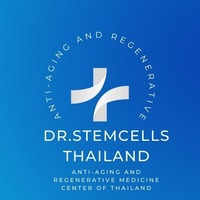Narcolepsy

Narcolepsy: Definition, Symptoms, Causes, Diagnosis, and Treatment
What is Narcolepsy?
Narcolepsy is a chronic neurological sleep disorder that disrupts the brain’s ability to regulate sleep-wake cycles, leading to excessive daytime sleepiness (EDS) and sudden, uncontrollable episodes of falling asleep (“sleep attacks”), even after adequate nighttime sleep1346. It is lifelong and can significantly affect daily functioning, safety, and quality of life.
Key Symptoms
- Excessive Daytime Sleepiness (EDS): The hallmark symptom; overwhelming urge to sleep at inappropriate times, often resulting in unintended naps or sleep attacks1234.
- Cataplexy: Sudden, brief loss of muscle tone triggered by strong emotions (e.g., laughter, anger). Occurs only in Narcolepsy Type 1 (NT1)1234.
- Sleep Paralysis: Temporary inability to move or speak when falling asleep or waking up, lasting seconds to minutes134.
- Hypnagogic/Hypnopompic Hallucinations: Vivid, sometimes frightening, dream-like experiences during the transition into or out of sleep134.
- Fragmented Nighttime Sleep: Frequent awakenings and poor sleep quality at night123.
- Automatic Behaviors: Performing routine tasks without conscious awareness, with little or no memory afterward13.
Not all patients have all symptoms. EDS is always present, but cataplexy is seen only in NT1. Children may show symptoms as behavioral issues or reduced concentration2.
Causes and Types
- Narcolepsy Type 1 (NT1): Characterized by cataplexy and/or low levels of hypocretin (orexin), a brain chemical that regulates wakefulness. Most cases are thought to involve autoimmune destruction of hypocretin-producing neurons13.
- Narcolepsy Type 2 (NT2): Similar symptoms but without cataplexy and normal hypocretin levels. The cause is less clear and may involve partial loss of hypocretin or other mechanisms13.
- Secondary Narcolepsy: Can result from brain injury, tumors, or infections affecting the hypothalamus1.
Genetic susceptibility (e.g., DQB1*0602 gene variant) and possible environmental triggers (infections, autoimmune responses) play a role, but most cases have no clear cause13.
Diagnosis
- Clinical Evaluation: Detailed history of symptoms and sleep habits, often including input from family members123.
- Polysomnography (PSG): Overnight sleep study to assess sleep architecture and rule out other disorders1.
- Multiple Sleep Latency Test (MSLT): Measures how quickly a person falls asleep and enters REM during several scheduled naps12.
- Cerebrospinal Fluid (CSF) Hypocretin Measurement: Low levels confirm NT11.
- Standard Diagnostic Criteria: EDS for at least three months, short REM latency on MSLT, and (for NT1) cataplexy or low hypocretin14.
Treatment
Narcolepsy is treatable but not curable. Treatment aims to control symptoms and improve quality of life.
- Medications:
- Behavioral and Lifestyle Strategies:
- Safety Precautions: Avoiding activities where sudden sleep attacks could be dangerous (e.g., driving)13.
Prognosis
With appropriate treatment, most people with narcolepsy can manage symptoms and lead fulfilling lives, though some degree of daytime sleepiness often persists26.
Summary Table
| Aspect | Details |
|---|---|
| Core Symptoms | Excessive daytime sleepiness, cataplexy (NT1), sleep paralysis, hallucinations |
| Main Causes | Loss of hypocretin-producing neurons (NT1), genetic and autoimmune factors |
| Diagnosis | Clinical history, PSG, MSLT, CSF hypocretin (NT1) |
| Treatment | Medications (stimulants, sodium oxybate, antidepressants), scheduled naps, CBT-N |
| Prognosis | Lifelong, manageable with treatment |
Consult with Our Team of Experts Now!
At DrStemCellsThailand (DRSCT)‘s Anti-Aging and Regenerative Medicine Center of Thailand, we emphasize comprehensive evaluations and personalized treatment plans of Cellular Therapy and Stem Cells for managing various health conditions. If you have questions about Narcolepsy or would like more information on our services, consult with our experts today!
Consult with Our Team of Experts Now!
References:
1 Sleep Foundation
2 Cleveland Clinic Journal of Medicine
3 Johns Hopkins Medicine
4 Medscape
5 PMC5611768
6 Cleveland Clinic















